AI-driven chatbots are changing how companies talk to customers. In 2025, they are no longer side tools. They are core systems for communication, service, and data collection. Businesses now use chatbots to scale support, personalize engagement, and reduce the cost of human labor.
From hospitals to banks, chatbots answer questions faster than call centers. They remember context, translate instantly, and are available 24/7. This article reviews nine examples that show how companies use chatbots in real operations — from healthcare to travel and marketing.
Each case offers lessons for anyone building digital communication.centers. They remember context, translate instantly, and are available 24/7. This article reviews nine examples that show how companies use chatbots in real operations — from healthcare to travel and marketing. Each case offers lessons for anyone building digital communication.

What Is an AI Chatbot?
An AI chatbot is software that interacts with humans using natural language. It understands messages, interprets meaning, and provides responses that sound human. Unlike old menu-based bots, AI chatbots use natural language processing (NLP) and large language models to adapt to user intent.
They work across text, voice, and even video. They can connect to CRM systems, internal databases, and cloud APIs. Modern bots learn from every interaction, improving accuracy over time.
According to Stanford Medicine, language-based AI tools already help clinicians analyze patient data and communicate clearly with patients. The same principles apply in customer support and e-commerce.
An AI chatbot helps automate repetitive tasks such as:
- Answering FAQs.
- Collecting feedback.
- Processing simple orders or appointments.
- Directing users to the right department.
To build such systems, companies often use platforms like the Graphlogic Generative AI & Conversational Platform. It allows businesses to design chat workflows, train voice models, and connect with external tools through APIs.
The next sections show how chatbots create real business results.
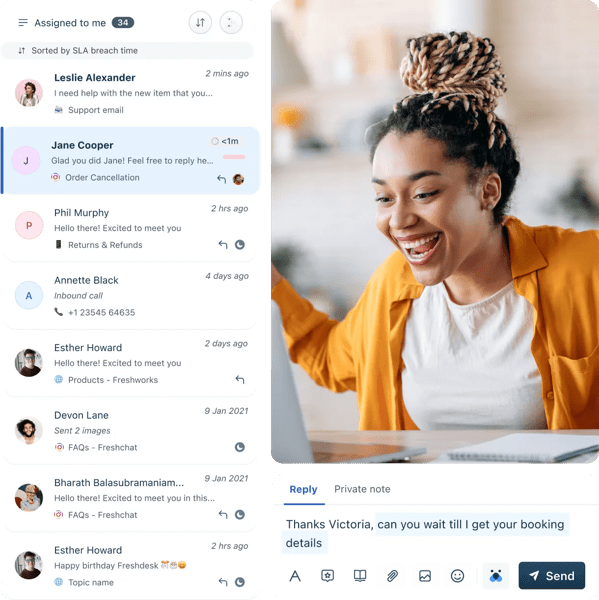
Why Are Chatbots Essential for Businesses in 2025?
In 2025, chatbots are no longer optional. They are an integral part of every customer experience strategy. AI adoption has accelerated across industries, driven by consumer expectations for immediacy and personalization. According to Gartner, around 80 % of customer interactions this year are managed by AI systems.
Businesses now use chatbots not only to respond to customer queries but also to analyze intent, predict behavior, and recommend next actions. This turns customer support into a proactive function rather than a reactive one.
Key benefits include:
- 24/7 service. Users expect instant answers at any time. Chatbots never rest and provide consistent quality regardless of time zone or traffic volume.
- Personalization. AI systems use conversation history and user data to deliver relevant offers, reminders, and follow-up actions. This helps brands build trust through consistency and context.
- Operational savings. Companies cut call-center costs by automating repetitive requests. According to a 2025 PwC report, automation can reduce customer service costs by up to 40 %.
- Faster lead conversion. Bots engage visitors instantly, qualify leads, and direct them to human teams when necessary. This shortens the sales cycle and improves conversion rates.
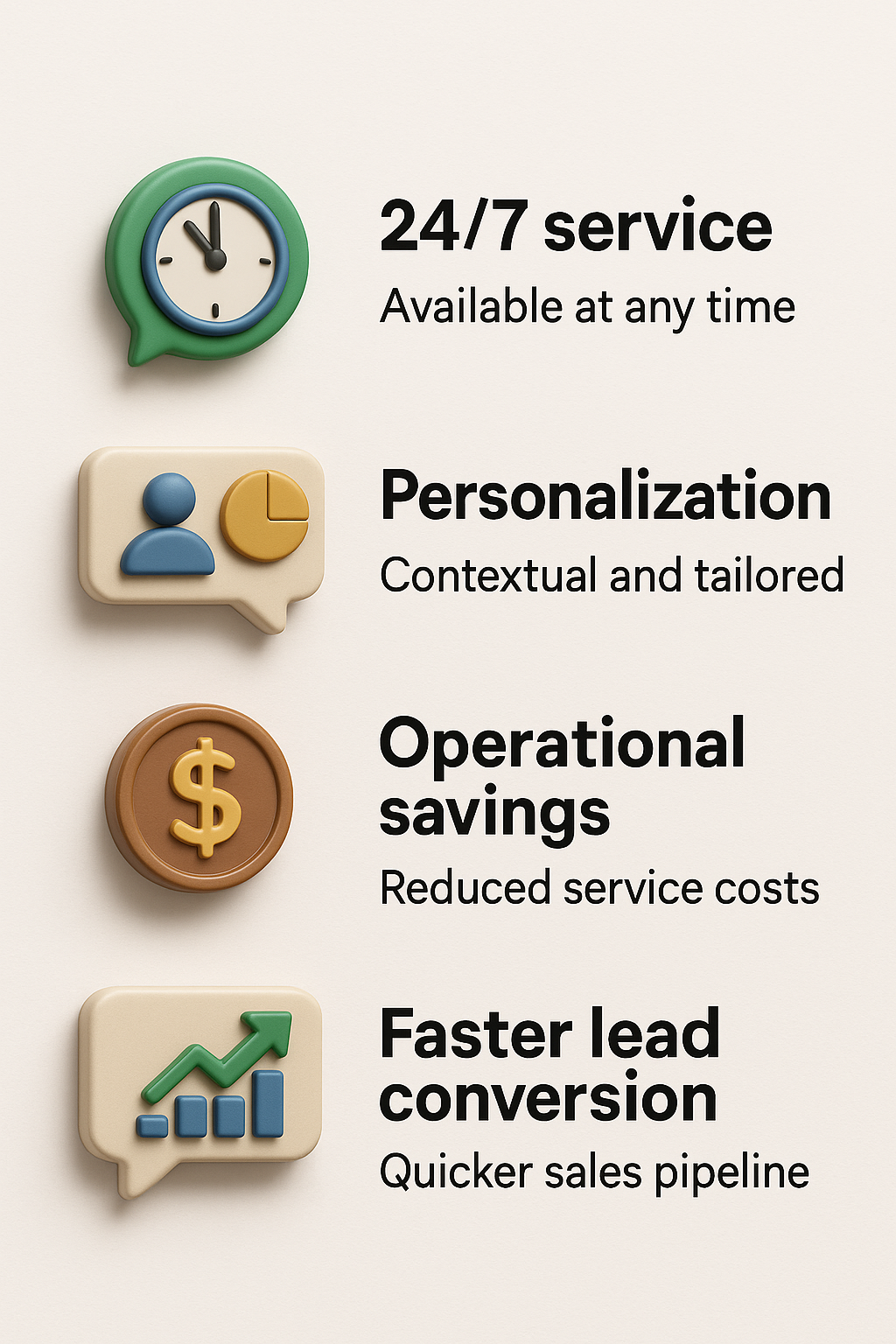
Chatbots also create measurable value through analytics. They collect structured feedback about common customer problems and language patterns. That data helps product and marketing teams identify friction points early and adjust messaging accordingly.
Healthcare organizations gain particular value from automation. As Mayo Clinic notes, digital assistants already improve scheduling accuracy, triage efficiency, and patient follow-up. Hospitals use them to provide medication reminders, send lab updates, and support remote monitoring.
Beyond efficiency, chatbots enhance accessibility. They make digital services more inclusive for users with disabilities or limited literacy. Through tools like the Graphlogic Text-to-Speech API, chatbots now speak in natural voices and multiple accents, creating a smoother experience for global users. This combination of voice and text interaction is especially valuable in telehealth, where clear and empathetic communication matters most.
Finally, in 2025, chatbots will act as central nodes of digital ecosystems. They integrate with CRMs, payment gateways, and virtual assistants, forming a unified channel for all customer communication. Businesses that embed conversational AI into their operations gain a long-term advantage — lower churn, higher satisfaction, and continuous learning from every interaction.
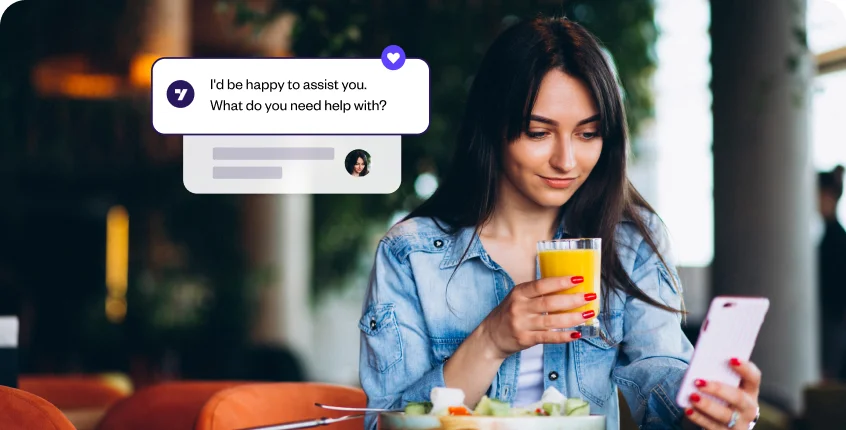
Customer Service Chatbot Examples
Customer service remains the top field for chatbot deployment. Voice and text bots now manage millions of tickets per month. They reduce waiting time, and agents handle only complex issues.
Example #1: Sony’s Isha
Sony launched Isha, a multilingual voice assistant that serves customers worldwide. It operates across 7 languages and handles over 21 000 interactions in under two months.
Isha uses voice recognition and intent analysis to resolve product setup issues and warranty questions. Customers no longer have to navigate long IVR menus.
The result: shorter call durations and a measurable increase in satisfaction scores. Sony reports a significant drop in missed requests.
This example shows how global brands use AI to maintain consistent quality without scaling human teams linearly.
Example #2: Waste Connections’ Trina
Waste Connections, a North American waste management company, created “Trina,” a customer service chatbot that manages over 100 000 unique users each year.
Trina automates scheduling, billing inquiries, and recycling information. When questions are too complex, it transfers the chat to human agents with full conversation history.
The company reports faster case resolution and improved employee focus on priority tasks.
According to a 2025 empirical analysis of over 100 000 user reviews, positive sentiment in interaction-focused dimensions (like customization, error recovery, adaptability) strongly correlates with overall user satisfaction — supporting models that blend automation and human oversight.
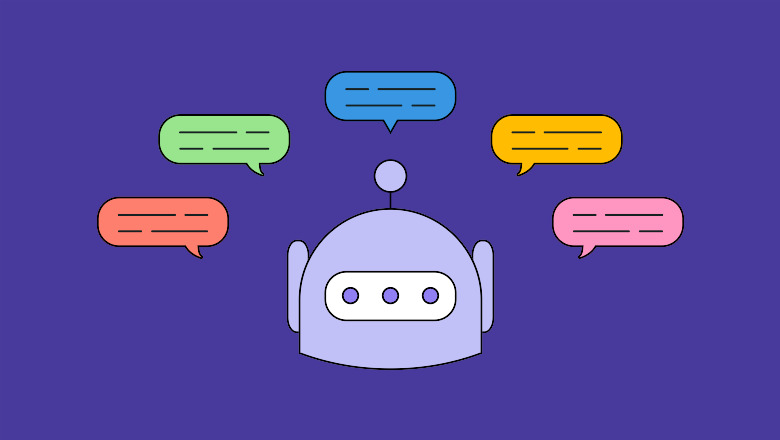
Marketing Chatbot Examples
Chatbots are also key marketing tools. They run campaigns, collect leads, and personalize recommendations in real time.
Example #3: Multinational Furniture Brand
A global furniture company integrated a conversational system on WhatsApp. Built with Yellow.ai and Zendesk, the bot manages promotions and service tickets in one interface.
It sends personalized offers, collects preferences, and connects users to local stores. The result was a measurable increase in conversion rate and repeat purchases.
Chatbots in marketing now act as data-driven campaign assistants rather than passive responders. They adapt messages based on behavior, location, and purchase history.
According to McKinsey & Company, AI personalization can increase sales by 10 – 20% when applied consistently.
E-Commerce Chatbot Examples
In online retail, customers expect immediate and accurate answers. Chatbots handle inquiries, recommend products, and track orders without friction.
A strong example is a major fashion retailer that uses AI chat to suggest styles based on browsing history. The system processes over 250 000 chats per month, freeing human agents to focus on returns and complex requests.
The use of conversational AI reduces cart abandonment and improves satisfaction scores. Bots can even help verify payment or shipping data securely.
For e-commerce brands, chatbot design now includes sentiment analysis, enabling bots to detect frustration and escalate the issue before the customer leaves the page.
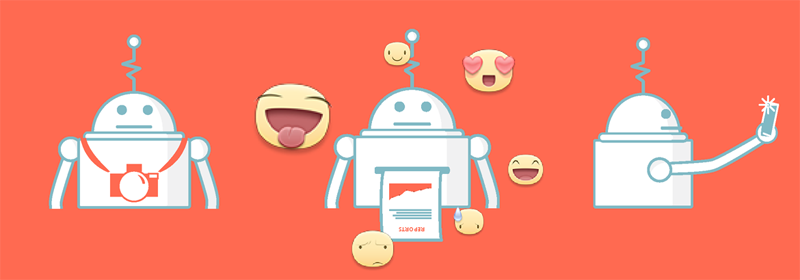
Human Resources Chatbot Examples
Chatbots now play a vital role in HR operations. They manage employee requests, automate policy guidance, and simplify onboarding.
Example #5: Aditya Birla’s Zoe
Zoe, the HR assistant from Aditya Birla, provides quick access to payslips, reimbursements, and company policies. Employees no longer wait for HR emails.
Zoe works 24/7, supports multiple departments, and reduces response time from hours to seconds. Internal surveys show higher employee satisfaction.
The system also collects anonymous feedback to track morale trends.
Example #6: Asian Paints
Asian Paints implemented a multilingual service bot to handle distributor support. The chatbot reduced call volume by 25 %.
It now manages product queries, delivery tracking, and invoice downloads directly within chat.
This use case shows how chatbots can enhance B2B communication, not just consumer support.
According to Deloitte Insights, conversational automation can reduce HR service costs by up to 30 %.
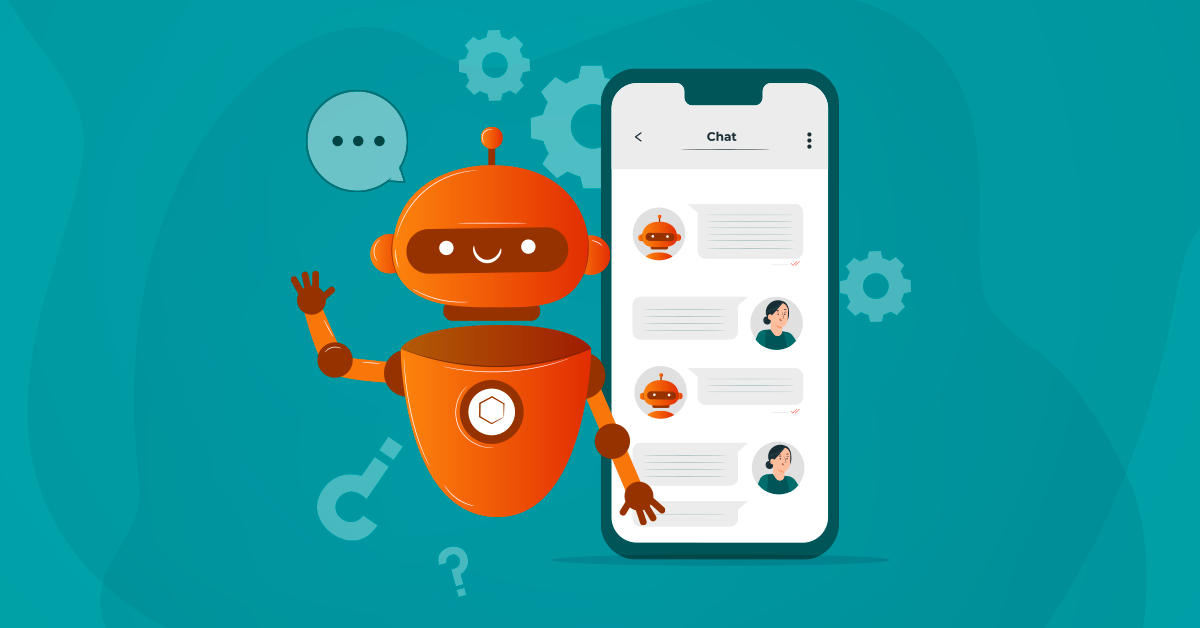
Healthcare Chatbot Examples
Healthcare chatbots focus on empathy and precision. They help patients access care faster and support clinicians with information.
Example #7: Zenyum
Zenyum, a dental care company, built a chatbot that manages inquiries from patients seeking orthodontic services. The bot explains treatment steps, pricing, and appointment scheduling.
It answers over 80 % of questions without human involvement, cutting operational workload and improving consistency.
Patients report higher satisfaction, citing faster responses and clear explanations.
In 2025, more healthcare providers will combine chatbots with voice interfaces to support elderly or visually impaired users. Tools like the Graphlogic Speech-to-Text API help build accurate medical transcription systems that improve both chat and documentation quality.
The World Health Organization notes that conversational AI can reduce healthcare inequality by enabling remote access to guidance and triage.

BFSI Chatbot Examples
Banking, financial services, and insurance companies use chatbots for high-volume transactions and customer education.
Example #8: Bajaj Finserv’s BLU
Bajaj Finserv launched BLU, a financial chatbot that helps users explore loans, manage EMI schedules, and apply for products.
BLU generated over $100 million in revenue through personalized financing offers. It engages customers across web and mobile channels and connects directly with CRM systems.
Security is a core focus. The bot uses encryption and verification layers that align with banking compliance standards.
Example #9: UnionBank’s Rafa
UnionBank of the Philippines introduced Rafa, a digital assistant integrated with its mobile app.
Rafa supports voice and text chat, helping customers check balances, report fraud, and complete transactions. The bank reports a three-fold increase in self-service adoption.
Financial chatbots like Rafa show how AI systems can blend user convenience with strong data protection.
According to IBM Research, the BFSI sector remains one of the fastest adopters of conversational AI due to its measurable ROI.
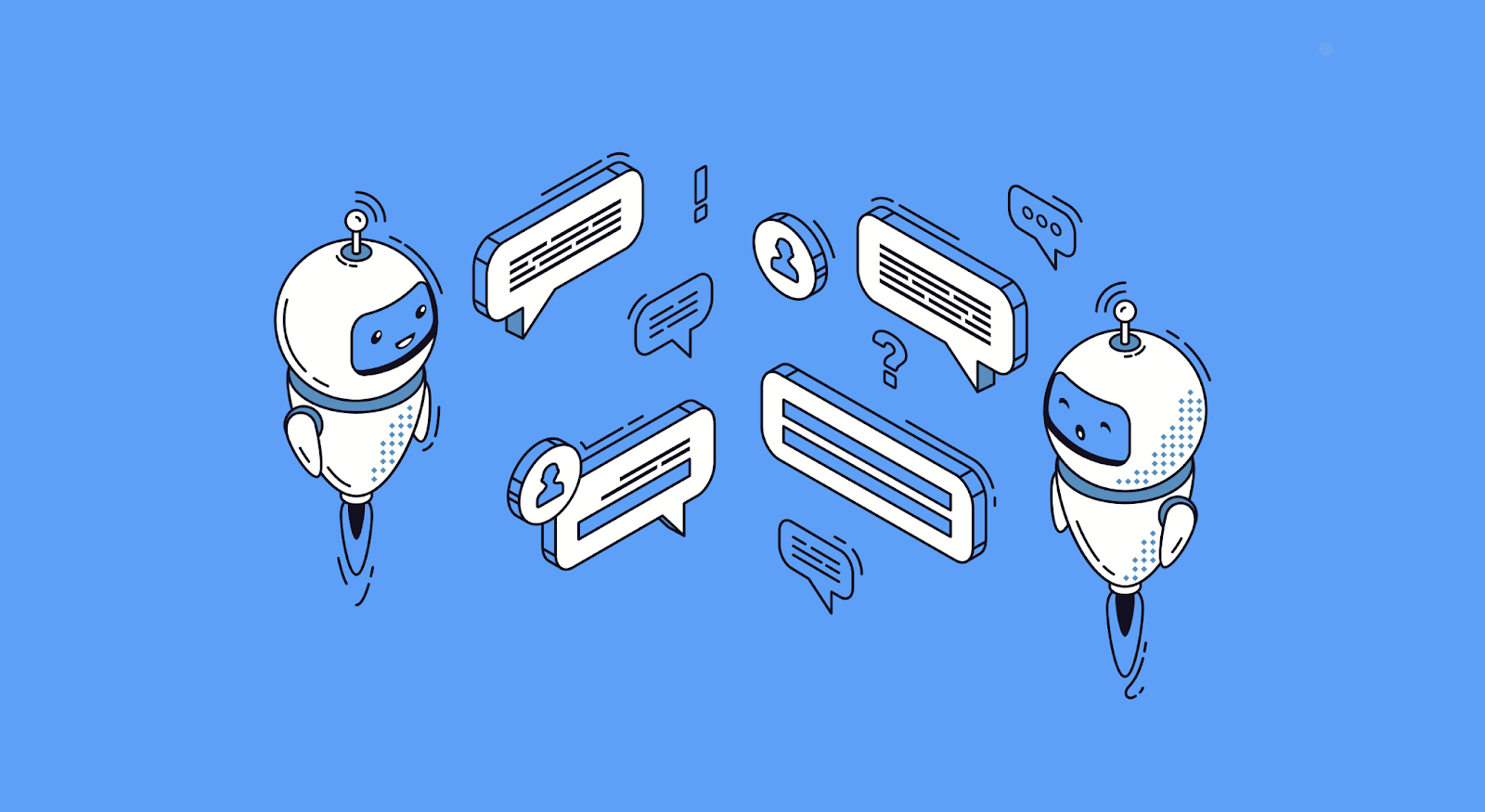
Entertainment and Gaming Chatbot Examples
Media and gaming platforms now use chatbots to personalize content delivery and improve retention.
For example, a streaming company deployed an AI assistant that recommends shows based on watch history and feedback. The bot also gathers preferences for new releases and creates user polls.
In gaming, chatbots moderate chats, manage player feedback, and guide new users through onboarding. These systems reduce churn by keeping communication open and responsive.
Chatbots in entertainment focus on engagement — creating conversation loops that feel natural without intrusive ads.
Travel and Tourism Chatbot Examples
Travel companies use AI assistants as digital concierges. They handle bookings, updates, and trip advice.
IndiGo Airlines developed “Dottie,” a chatbot that automates over 35 customer use cases. It handles check-in, seat selection, flight changes, and baggage questions.
Customer satisfaction rose to 87 %, driven by faster replies and transparent updates.
The Bengaluru Metro launched a QR ticketing bot that sells passes through WhatsApp. It eliminates queues and supports multiple payment modes.
Chatbots in travel now also handle disruptions — notifying passengers about delays and providing real-time rebooking options.
According to Forbes Technology Council, travel bots are now key to improving loyalty through proactive information delivery.
Chatbots Fuel Business Growth
Chatbots in 2025 are more than automated responders. They are communication layers between data and humans.
From hospitals and airlines to online retailers, chatbots manage tasks that once required full teams. They improve accuracy, speed, and consistency. The examples above prove that automation can enhance human work rather than replace it.
The integration of AI, NLP, and speech technologies gives these systems natural flow. Platforms like Graphlogic Generative AI & Conversational Platform make it possible to build scalable, domain-specific assistants in weeks.
Businesses that adopt conversational AI early gain a competitive advantage through better customer retention, lower costs, and richer analytics.
FAQ
A chatbot uses AI models and NLP to process input and generate context-aware replies. It connects with backend systems for data access and task automation.
Any industry that relies on communication — healthcare, finance, travel, retail, or HR — can use chatbots to improve service efficiency.
The main benefits include continuous availability, faster support, data collection, and operational savings.
Yes. Modern financial chatbots use encryption, two-factor authentication, and audit logs. These features reduce fraud and protect sensitive information.
Generative AI allows chatbots to understand intent better, create human-like responses, and handle voice or image input. It transforms them from scripted tools into adaptive digital agents.
No. Chatbots assist with triage, reminders, and education, but they do not diagnose or prescribe treatment. Clinical decisions must always involve qualified professionals.
Chatbots will merge with voice, augmented reality, and predictive analytics. They will act as unified digital companions for both consumers and professionals.

